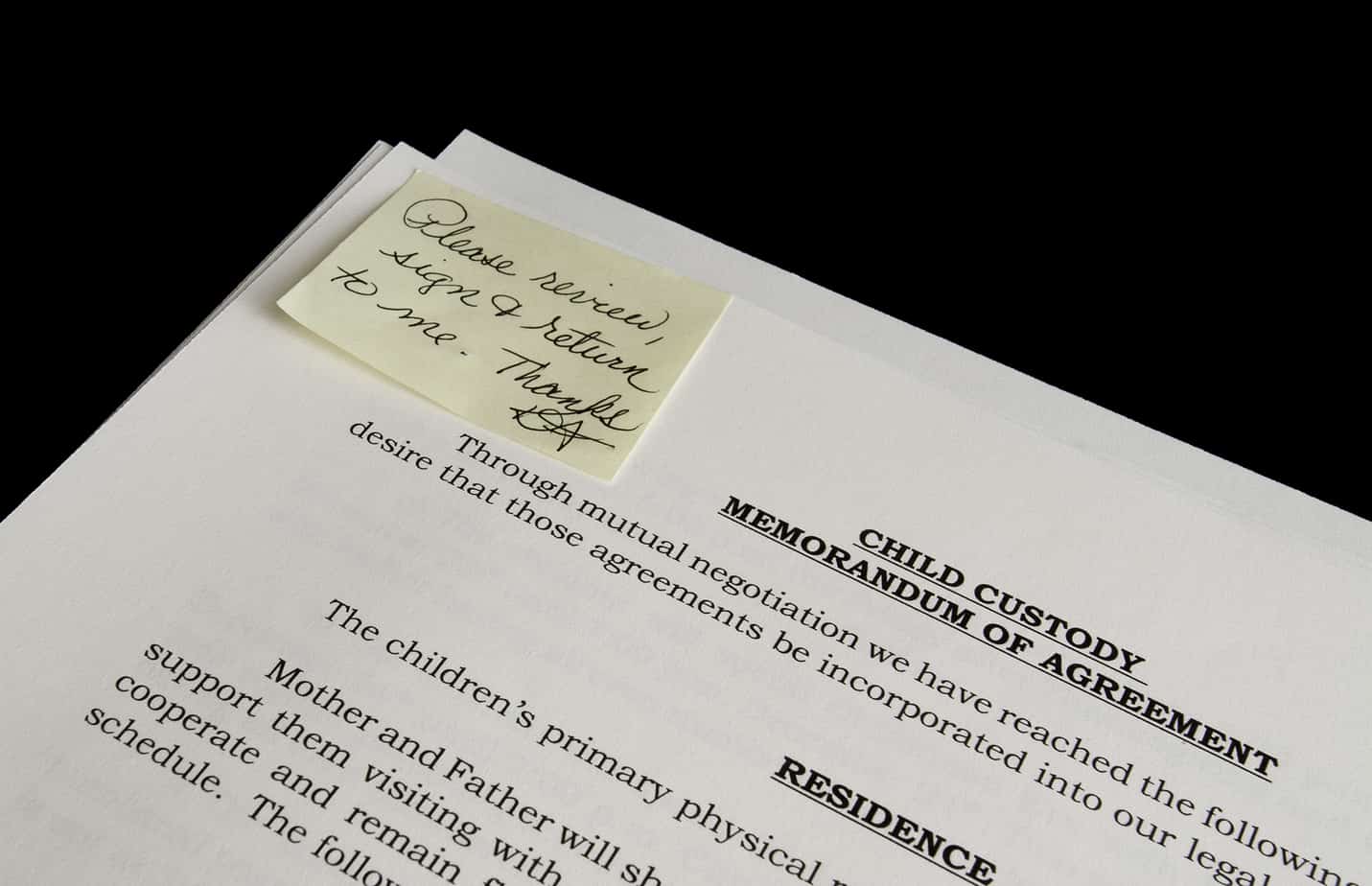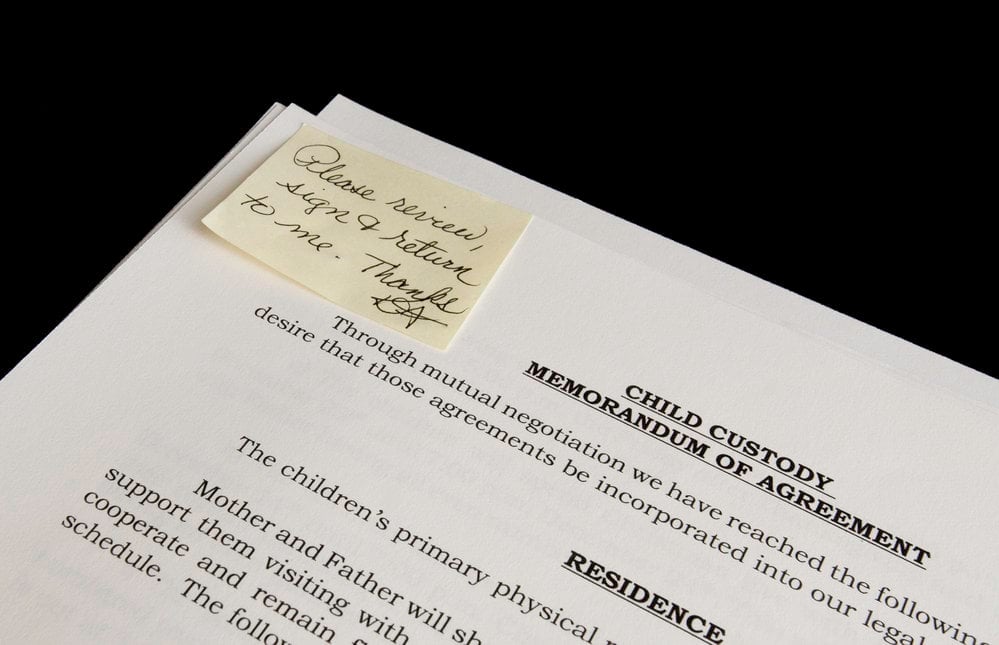Regarding child custody cases, it’s not uncommon for a father’s name to be missing from the birth certificate. Situations like these can leave many wondering whether a father can still obtain joint custody. The answer is yes, fathers can secure joint custody even if they’re not listed on the birth certificate, but the process may be more complex.
To begin with, establishing paternity is a crucial step in this scenario. It is essential to provide legal proof of the biological relationship between the father and the child, as it forms the basis for further discussions about custody. Once paternity has been confirmed, the father’s rights and responsibilities can be addressed in court, and the child’s best interest will always be the top priority in any child custody case.
A range of factors are considered when determining the child’s best interests, including the child’s emotional and physical well-being, the living conditions of each parent, their ability to provide support, and more. Fathers seeking joint custody must establish a parenting plan that reflects their commitment to meeting these requirements while working collaboratively with the child’s mother.
Key Takeaways
- Establishing paternity is crucial for fathers seeking joint custody without being on the birth certificate.
- The child’s best interest remains the top priority in every child custody case.
- A comprehensive parenting plan should reflect the father’s commitment and ability to work collaboratively with the child’s mother.
Establishing Paternity
Establishing paternity is crucial for a father seeking joint custody, especially when his name is not on the birth certificate. This section discusses the various ways to establish paternity.
DNA Testing
One of the most reliable methods to establish paternity is through DNA testing. Genetic testing has come a long way, making it easier than ever for potential fathers to confirm their biological connection to a child. It’s a quick and painless procedure in which a swab is taken from the inside of the cheek of the child, the alleged father, and sometimes even the mother. Once the samples are collected, they are sent to a lab, where the DNA is analyzed to determine the likelihood of a biological relationship.
Knowing one’s medical history can be crucial for the child’s well-being, as some conditions and predispositions are inherited. DNA testing is the most accurate method and can provide a sense of certainty so that both parties can move forward accordingly.

Voluntary Acknowledgment of Paternity
Unmarried fathers can establish paternity using a Voluntary Acknowledgment of Paternity (AOP). This document is a legal agreement between the mother and the alleged father, stating that the latter is the child’s biological parent. Both parties must sign the acknowledgment willingly, recognizing their roles and responsibilities towards their offspring.
However, it’s crucial to note that the father gives up his right to a DNA test by signing the AOP. Should any doubt arise in the future, the only way to rescind the acknowledgment is within a limited timeframe, typically 60 days. After this window expires, challenging the AOP becomes significantly more difficult and likely involves a court process.
Paternity Action
If establishing paternity is not as straightforward due to the mother’s objections or other complications, a father may initiate a paternity action in court. This legal step can determine paternity and ultimately result in the father’s name being added to the birth certificate.
It’s essential to remember that each state has a different statute of limitations regarding paternity actions. Fathers must initiate the process within the prescribed timeframe to assert their legal rights. A paternity action might also require DNA testing to confirm the biological connection and solidify the father’s case.
In conclusion, fathers not listed on the birth certificate can still pursue joint custody by establishing paternity through various means, such as DNA testing, signing a Voluntary Acknowledgment of Paternity, or initiating a paternity action. Each method has pros and cons, but ultimately, the objective remains to protect both the child’s and the father’s legal rights and well-being.
Father’s Rights and Responsibilities
Fathers may face a few challenges regarding custody rights, especially if they are not listed on the child’s birth certificate. Knowing their rights and responsibilities in this situation is vital for both the father’s and the child’s well-being.
Legal Rights
By law, an unmarried father not on the birth certificate may still have custody rights. Establishing paternity is the first significant step in this process. This can be done by signing a voluntary acknowledgment of paternity or undergoing a DNA test. Once paternity is acknowledged or proven, the legal father has the right to be involved in important decisions related to the child, such as education, healthcare, and religion.
Physical Custody
Regarding physical custody, regardless of their marital status, both parents are generally entitled to seek joint custody arrangements. The courts may order joint custody or allow the father visitation rights depending on the jurisdiction. In some cases, if the father can prove it’s in the child’s best interest to live with him, he may be granted primary custody. However, it’s important to note that each case is unique, and the judge will assess every situation individually.
Parental Rights
Fathers have a right to be active in their child’s life, even if they weren’t initially on the birth certificate. They provide financial support and contribute to the child’s upbringing. Moreover, unmarried fathers must be aware of potential legal challenges that may arise. For instance, they might face an uphill battle in domestic violence cases or when the child’s mother contests their involvement. A father’s rights advocate or legal representation could ensure favorable outcomes.
Fathers not on the birth certificate can secure joint custody and fulfill parental responsibilities. All it takes is a determination to establish paternity, understand the legal landscape, and navigate the complexities involved in the process.

Child Custody Options
Joint Custody
Joint custody is a popular and appealing option for parents who are no longer together but are still willing to co-parent. Both parents share responsibilities, decision-making, and time with the child. This helps maintain stability and ensures that a child benefits from both parents’ love, care, and guidance. In this scenario, it’s important to note that although a father may not be on the birth certificate, he can still obtain joint custody by establishing paternity and demonstrating his commitment to the child.
Sole Custody
On the other hand, sole custody is when one parent is given primary custody of the child. This typically means they have both physical custody and legal custody, meaning they’re responsible for the day-to-day well-being of the child and have the exclusive right to make decisions for their care. In cases where a father is not on the birth certificate, attaining sole custody may be more challenging, but it’s not impossible. Demonstrating that the father is better suited for providing a stable environment, financial support, and emotional care can help strengthen the case for sole custody.
Shared Custody
Shared custody occupies a sort of middle ground between joint and sole custody. While both parents continue to play an active role in their child’s life, there isn’t necessarily a 50/50 split of responsibilities and decision-making. In shared custody, each parent has physical custody of the child for a certain period, and both contribute to decisions related to the child’s welfare. In cases where a father isn’t listed on the birth certificate, it’s still possible to pursue shared custody by proving paternity and commitment to the child’s well-being.
The paramount concern is the child’s best interests, regardless of the custody arrangement. Child custody laws ensure that children are protected and provided for, regardless of the circumstances surrounding their parents’ relationship. While having one’s name on the birth certificate can seem like a significant obstacle for a father pursuing joint, sole, or shared custody, the court will ultimately weigh the evidence and decide based on the child’s best interests.

The Best Interest of the Child
Health and Well-Being
In determining the child’s best interest, a court will consider the health and well-being of the child. This includes access to health insurance and quality health care for the child. It’s important to note that a father not listed on the birth certificate can still advocate for the child’s best interests. This includes arranging proper medical care and ensuring a safe home environment. Demonstrating his commitment to the child’s well-being, a father can improve his chances of being granted joint custody.
Education and Religion
Another factor in the child’s best interest is their education and religious upbringing. A father not on the birth certificate can still shape the child’s schooling and religious practices. To show the court he is knowledgeable and engaged, a father may want to communicate closely with the child’s educators, attend school meetings, and be involved in their spiritual life. By being proactive, a father stands a better chance of receiving joint custody since the court can see that he is genuinely interested in contributing to the child’s development.
Co-Parenting
Successful co-parenting is paramount to ensure the child’s best interest is put first. Both parents must communicate openly and address any conflicts that may arise. Even if a father isn’t listed on the birth certificate, he can still demonstrate effective co-parenting skills through healthy communication and collaborative decision-making. These attributes will show the court that he is a responsible and caring parent willing to work with the other parent for the child’s benefit. A father can strengthen his case for joint custody by fostering a positive co-parenting relationship.
Child Support and Financial Obligations
Financial Support
Regarding child support, it’s crucial to understand that a father’s financial responsibilities aren’t dependent solely on his name on the birth certificate. In most cases, if the father can establish paternity, he may still be eligible for joint custody and be expected to contribute to child support.
Establishing paternity can be done voluntarily through a paternity acknowledgment form or involuntarily through a court-ordered DNA test. Once paternity is confirmed, the father’s responsibility for child support kicks in, and both parents need to cooperate to meet the child’s financial needs.
Child support guidelines are typically based on the parents’ combined incomes and the number of children they support. These payments cover various expenses, including necessities like food, clothing, shelter, and educational and extracurricular activities. The father must comply with child support orders to avoid legal consequences and ensure the child’s well-being.
Health Insurance
Aside from direct financial support, a father may also be required to provide health insurance coverage for their child. This usually depends on the specific circumstances of each case and whether the father has access to affordable insurance through his employer or another source. If so, he may be asked to include the child in his coverage or contribute to the child(ren)’s insurance cost.
Health insurance provisions may encompass a variety of expenses, such as premiums, copays, deductibles, and out-of-pocket costs. As part of the child support agreement, parents should work together to determine how these costs will be split and ensure their child can access proper medical care.
In conclusion, a father’s eligibility for joint custody and financial obligations towards his child is not solely determined by his presence on the birth certificate. By establishing paternity and working with the child’s mother, a father can still play a significant role in the child’s life, both emotionally and financially.
Establishing a Parenting Plan
When a father is not on the birth certificate, creating a parenting plan is vital for establishing joint custody. A parenting plan is a written agreement that outlines how parents will share the responsibility of raising their children, even if they’re not together.
Decision-Making
An essential aspect of the parenting plan is outlining decision-making processes. It’s crucial to ensure that both parents are involved in significant decisions affecting the child’s life. A well-defined parenting plan clearly understands each parent’s role in the child’s upbringing and ensures that the child’s best interests are always at the heart of any decision.
Determining what constitutes a major decision is an important step in developing the plan. These decisions may include education, healthcare, and religious upbringing.
Visitation Schedule
Another crucial component of a parenting plan is developing a visitation schedule. Establishing a regular visitation schedule allows both parents to maintain a strong parent-child relationship. It’s important to remain flexible and consider the child’s needs, such as school activities, extracurricular programs, and holidays.
To accomplish this, parents must work together to create a schedule that accommodates the child’s needs and the parents’ work commitments and other responsibilities. This collaborative effort can foster a healthy co-parenting relationship, a cornerstone for the child’s long-term well-being.
In conclusion, when a father is not on the birth certificate, developing a parenting plan that addresses decision-making processes and visitation schedules is essential to establish joint custody successfully. With clear communication and mutual respect, parents can confidently work together to support their child’s best interests.
Legal Process
Court Order
Obtaining joint custody when the father isn’t on the birth certificate requires navigating the legal process with precision. First and foremost, he needs to obtain a court order for paternity, which legally establishes the father-child relationship. If she agrees, this can be achieved through a petition filed by the father or mother. Once paternity is legally recognized, the next step toward joint custody begins.
Family Law
Family law comes into play as the father seeks to establish joint custody. It’s a complex area dealing with various aspects related to relationships and children. Although family law varies from state to state, the child’s best interest is always the primary concern. In this regard, hiring a family attorney could be extremely beneficial for navigating legal issues and ensuring the father receives a fair assessment of his case.
Trial
Finally, the father may face a trial to secure joint custody. Depending on the circumstances, the court may hold a full trial or a preliminary hearing to evaluate the case’s merits. Throughout the trial, the father and his attorney must present compelling arguments supporting his case for joint custody. The court will closely examine factors like the father’s relationship with the child, financial stability, and the child’s needs.
In conclusion, the legal process for a father seeking joint custody without being on the birth certificate can be challenging. However, with the appropriate steps – obtaining a court order, understanding family law, and preparing for trial – a father can secure joint custody and maintain his relationship with his child.
Custody and Visitation Rights
Regarding custody and visitation rights, the question of whether a father can get joint custody if he’s not on the birth certificate is crucial. An unwed father can obtain joint legal custody of their child, even if his name isn’t listed on the birth certificate. However, the process can be more complicated than it is for a father whose name is on the birth certificate.
In most cases, establishing legal paternity is the first and foremost step. This can be done by signing an acknowledgment of paternity form or by pursuing a paternity action in court. By establishing paternity, the father takes on legal responsibility for the child and gains the ability to seek joint custody.
Once paternity is established, the father can begin negotiating custody and visitation rights. Joint legal custody allows both parents to have a say in major decisions for the child, such as education, healthcare, and religious upbringing. To secure joint custody, the father must create a parenting agreement with the child’s mother, outlining each parent’s responsibilities and expectations regarding visitation schedules, decision-making, and financial support.
Mediation or a court hearing may be necessary to establish custody and visitation rights if a mutual agreement is difficult to reach. Courts usually focus on the child’s best interests when deciding joint custody. Factors such as the father’s relationship with the child, his ability to provide a stable home environment, and the level of support and cooperation between both parents will play a significant role in the court’s decision.
In summary, while omitted from the birth certificate may create some extra hurdles for a father seeking joint custody, it is not an insurmountable barrier. By establishing paternity and working diligently through the legal process, a father can ultimately secure the right to be an active and involved parent – sharing the joys and responsibilities of raising their child.

Frequently Asked Questions
How can a father establish paternity to seek joint custody?
To establish paternity, a father can sign a voluntary acknowledgment of paternity, a legal document in which both parents declare their relationship to the child. Sometimes, the father may need a DNA test to prove he is the biological parent. Additionally, he can seek the help of a family law attorney to guide him through the process.
What legal steps are required for a father to get joint custody of his child?
First and foremost, a father must establish paternity to have any legal rights to his child. After doing so, he can petition the family court to request joint custody. During the custody hearing, he must demonstrate that joint custody is in the child’s best interest. The court will then examine factors such as the parent’s ability to cooperate, the child’s relationship with each parent, and the child’s need to decide.
Is joint custody possible if the father’s name is absent from the birth certificate?
Yes, joint custody is still possible even if the father’s name is not on the birth certificate. However, before being considered for joint custody, the father must establish paternity. Once this is done, the legal process of seeking joint custody may commence.
Does a court order for joint custody require a father’s name on the birth certificate?
A court order for joint custody does not mandate the father’s name to be on the birth certificate. However, establishing paternity and adding the father’s name to the birth certificate can provide legal benefits and streamline the process of seeking joint custody.
Can a DNA test be used to prove paternity for joint custody?
Absolutely. A DNA test is a reliable and accepted method to establish paternity. If the test confirms the father’s biological relationship with the child, he can request joint custody from the family court.
How do family courts view cases of unmarried fathers seeking joint custody?
Family courts focus on the best interests of the child. When considering an unmarried father’s request for joint custody, judges will evaluate factors like the father’s involvement in the child’s life, stability, and capability to provide care. Unmarried fathers have equal rights to seek joint custody but must establish paternity before the court can consider their custody request.



